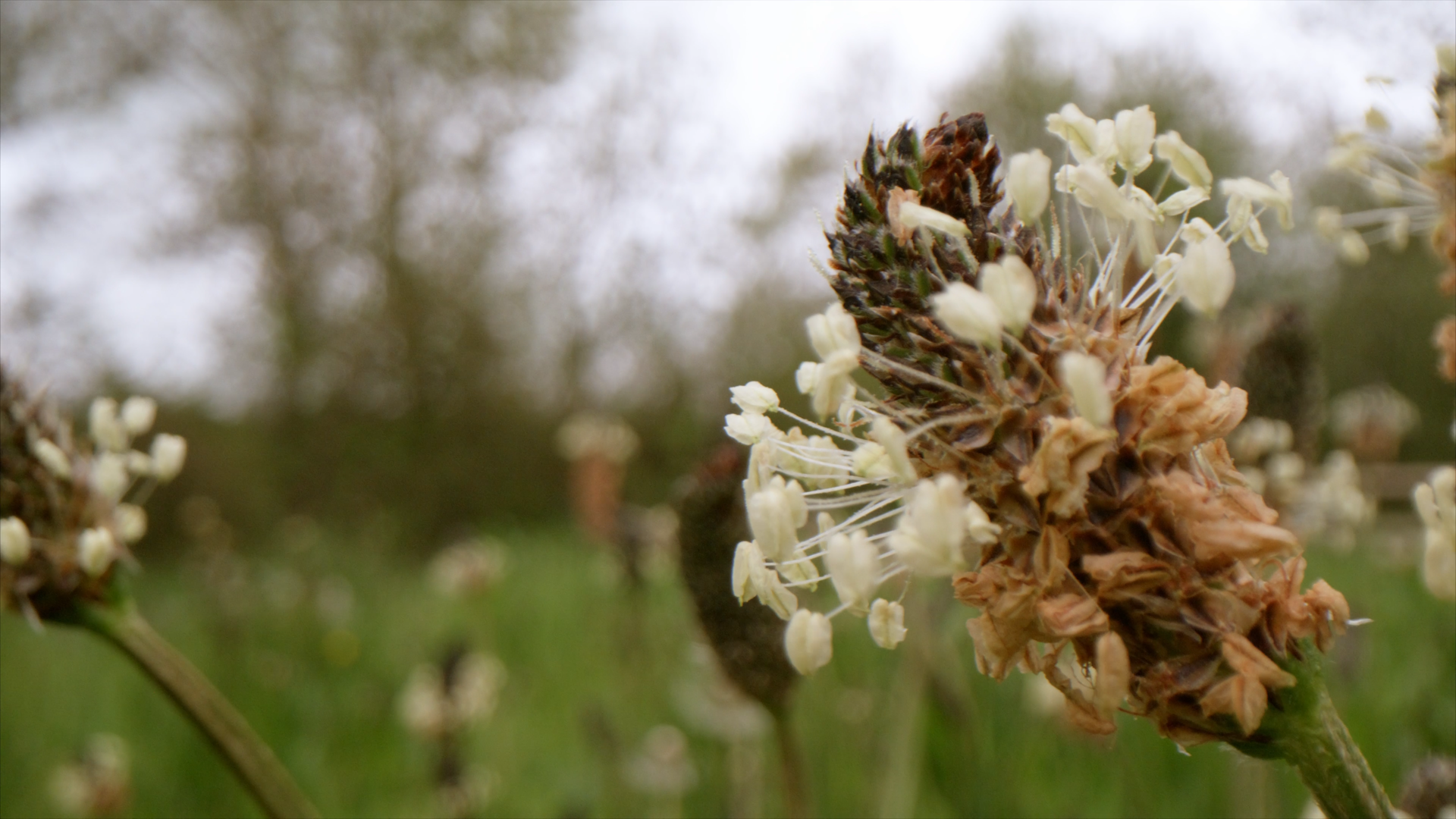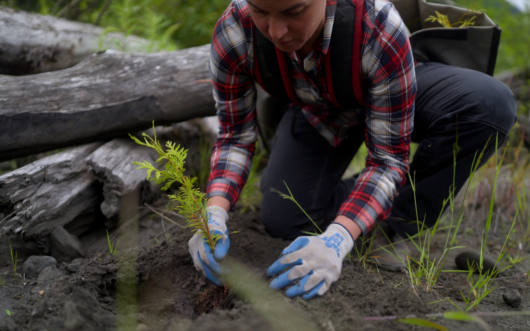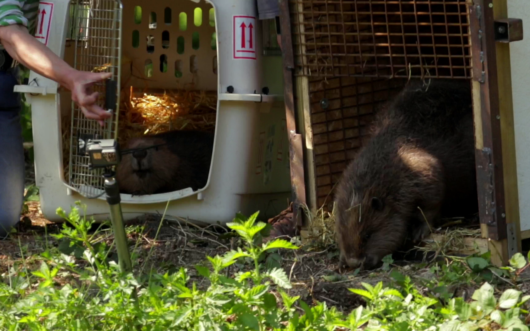Wild campuses, urban beavers, and an unlikely lifeline for Hawaiian honeycreepers
Native Plants Take Root on College Campuses
College campuses across the United States are abuzz about native plant gardens. The concept of turning cultivated, pesticide-treated yards into wild pollinator paradises appeals to students looking for tangible ways to tackle the dual threats of climate change and biodiversity loss, NPR reports.
And they have more resources to achieve their vision than ever before, thanks to an initiative called Re:wild Your Campus. The nonprofit organization offers trainings and workshops to help students learn basic gardening techniques and understand their native ecosystems. At the College of New Jersey, for instance, students are using what they’ve learned to plant a meadow and an organic garden with a mix of native and edible plants.
Want to see another school rewilding initiative in action? Watch the Wild Hope episode “Gardener to Guardian”!
The Beavers are Back in Town
One Scottish family is settling down nicely in its new riverside home in London — a family of beavers, that is. These pioneering river rodents, released into a park called Paradise Fields last fall, are the first five beavers to call London home for at least 400 years. They’re part of a growing effort by conservationists to reintroduce the enterprising aquatic animals to the UK.
And Britain isn’t bringing back beavers just because they’re cute. The hope is that they will provide a whole host of valuable services as they reshape the landscape, reports the solutions journalism site Reasons to Be Cheerful. By cutting down trees and damming rivers, beavers restore wetland habitat, create flood buffers, and cultivate new habitats that benefit a number of other creatures. In Paradise Fields, scientists are hoping that the new beaver family will prevent a local brook from flooding a nearby shopping mall.
To see these impressive ecosystem engineers in action and learn more about beaver rewilding in Britain, watch the Wild Hope episode “Beaver Fever”.
In Alabama, an Iconic Snake Returns
Last month, 40 iridescent purple snakes slithered into their new home in the Conecuh National Forest in Alabama, Outdoor Alabama reports. The move was an important milestone for a comeback story years in the making.
The eastern indigo snake is the longest native snake in the United States and was once abundant in the Southeast’s longleaf pine forests. But timber harvest, agriculture, and development destroyed much of its habitat in Alabama. It went locally extinct, disappearing from the state for more than 50 years. That changed in 2010, when conservationists began to release captive-bred indigo snakes back into the wild. The latest batch of releases brings the total number up to 250.
The effort in Alabama is part of a wider initiative to reintroduce the eastern indigo throughout its historic range in the southeastern United States. The reintroduction benefits far more than just indigo snakes — these apex predators eat on smaller predators, keeping their numbers in check to bolster the health of the longleaf pine forest ecosystem. Learn more about the return of indigo snakes in the Wild Hope episode “The Serpent’s Lair“!
Can Mosquitoes Save Hawaii’s Native Birds?
The last of the Hawaiian honeycreepers — Hawaii’s native forest birds — are in trouble, threatened by an introduced mosquito-borne disease called avian malaria. Some species are so endangered that they are predicted to go extinct within the next several years. But researchers have come up with a bold plan to rid Hawaii of its disease-carrying mosquitoes and save the remaining birds before it’s too late. To fight back, conservationists are pioneering a counterintuitive plan on the island of Maui: release even more mosquitoes.
The new recruits aren’t just any mosquitoes. They’re specially-bred male mosquitoes that carry a particular strain of a bacteria that dooms any breeding attempts with local females. The hope is that this will cause a population crash among all mosquitoes when their attempts to mate don’t produce any offspring. So far, scientists have released 10 million of the male mosquitoes over Maui, NPR reports. Time will tell if the gambit has paid off — the first noticeable drop in mosquito numbers should come this fall, after the insect’s summer boom months.
Learn more about Hawaii’s special birds, and the conservationists who have dedicated their careers to saving them, in the Wild Hope episode Birds on the Brink.




